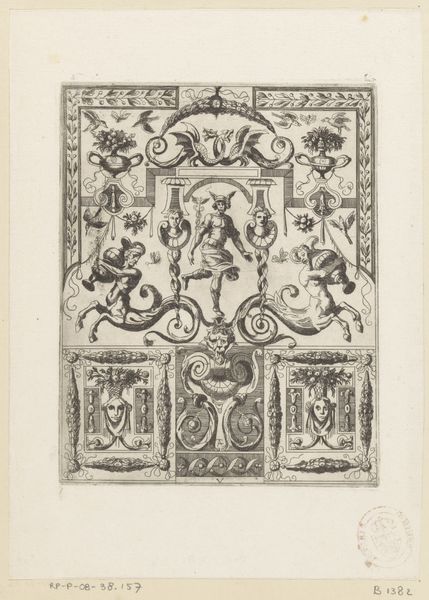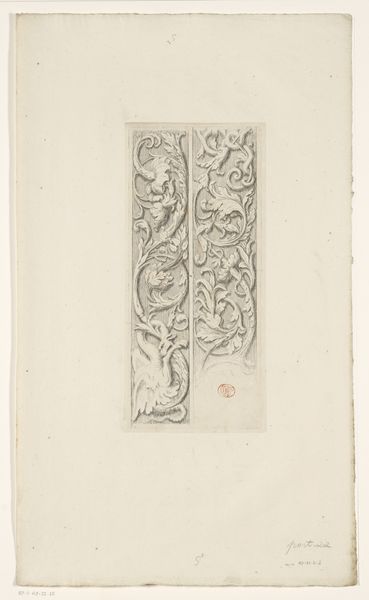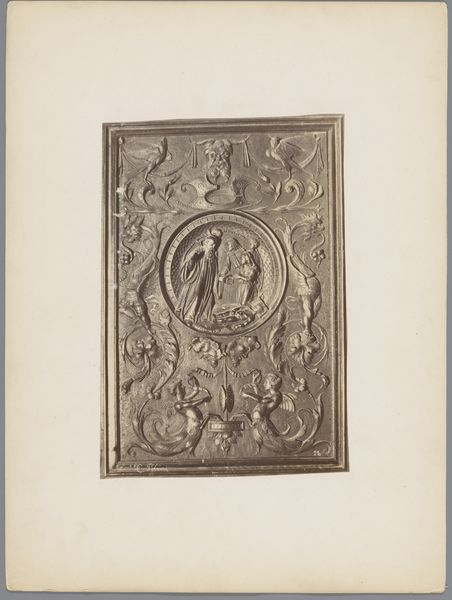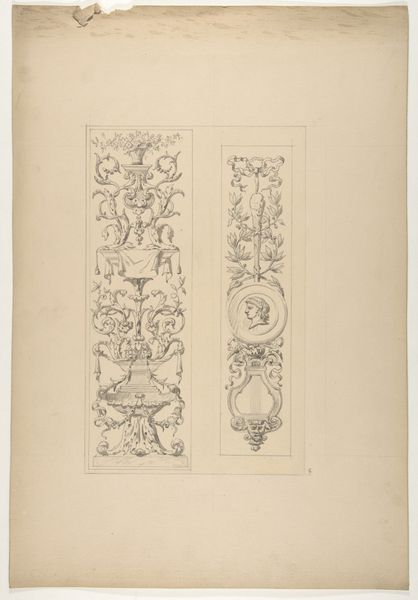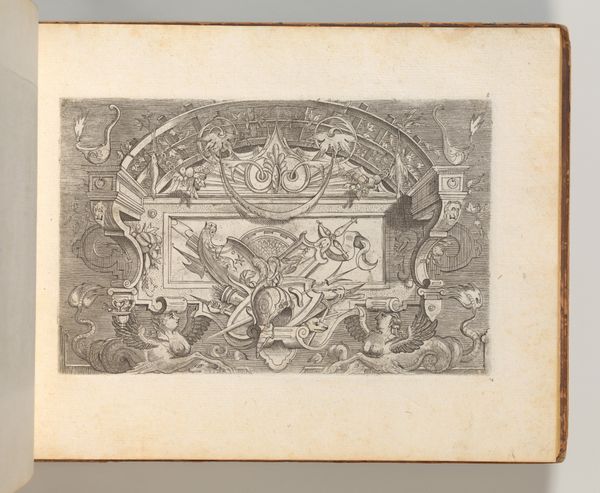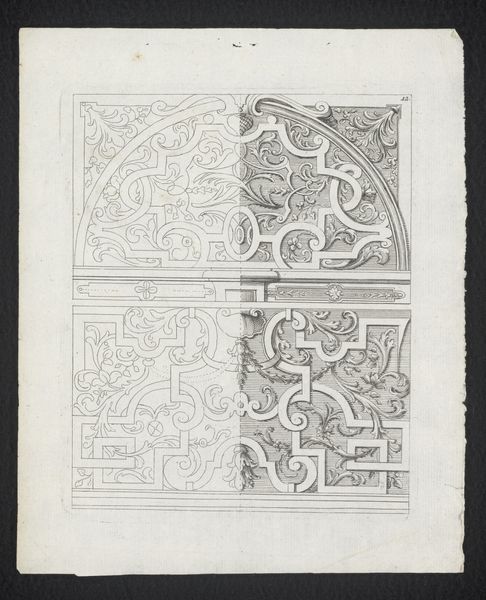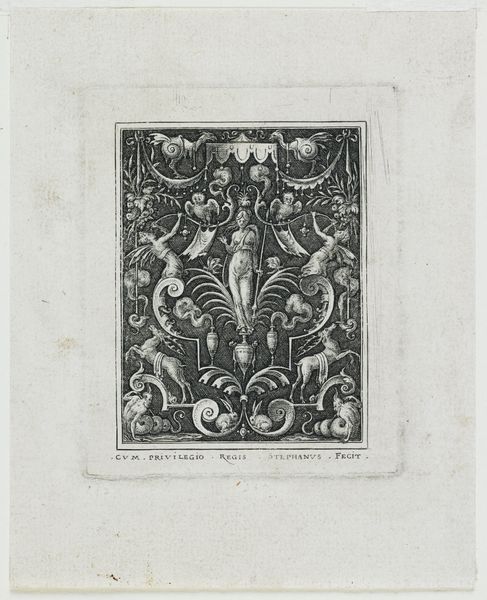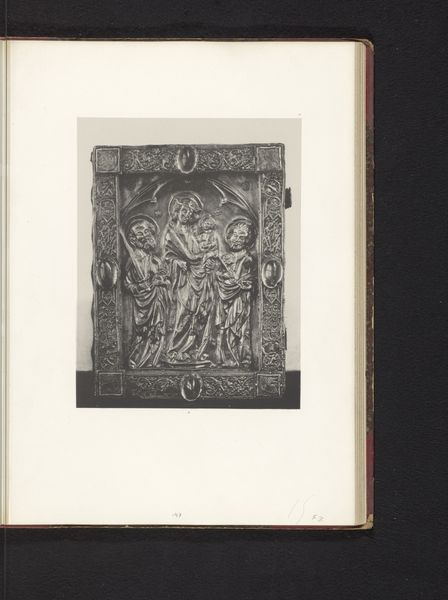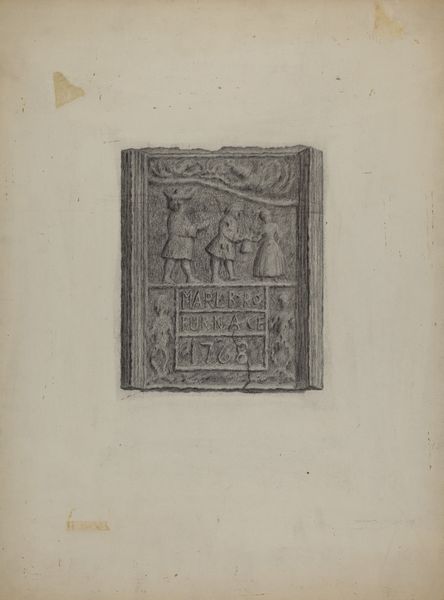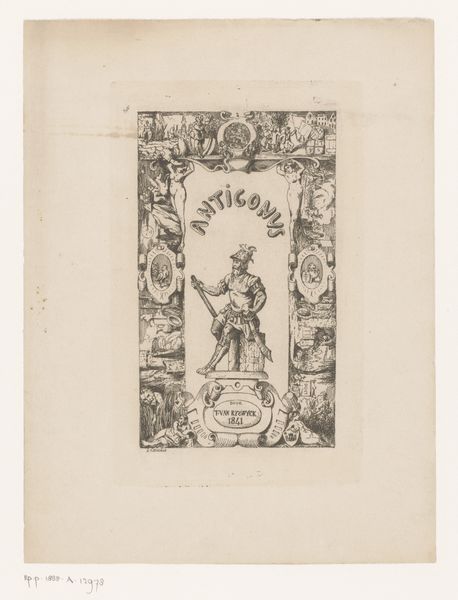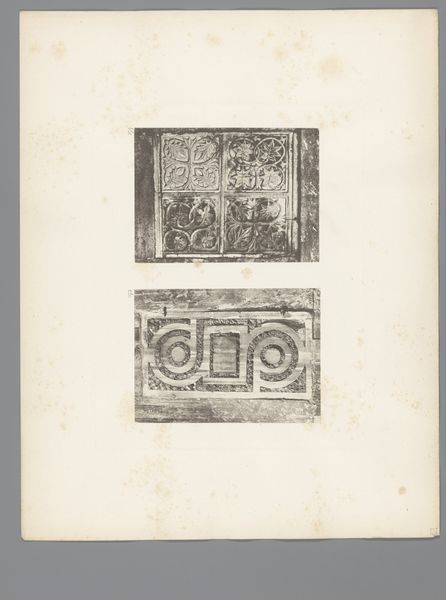
Part of an ornamental slab with arabesques and bacchantes from Hadrian's Villa, Tivoli, and a terracotta fireze from the Gaetani Gardens 1769 - 1778
0:00
0:00
print, relief, engraving
#
neoclacissism
# print
#
relief
#
ancient-mediterranean
#
history-painting
#
engraving
Dimensions: 540 mm (height) x 390 mm (width) (plademaal)
Curator: Good morning. Today, we're looking at Giovanni Battista Piranesi's engraving, "Part of an ornamental slab with arabesques and bacchantes from Hadrian's Villa, Tivoli, and a terracotta fireze from the Gaetani Gardens," created between 1769 and 1778. It’s a print offering a detailed depiction of ancient Roman relief. Editor: What strikes me immediately is its density; the intricate layering gives it an almost claustrophobic feel, despite its clear attempt to capture the grandeur of antiquity. It seems weighed down by its own complexity. Curator: Indeed. Piranesi's strength lies in this exact articulation. Note the contrast in textures. The smoothness of the idealized human forms is juxtaposed with the ruggedness of the acanthus leaves, conveying both order and the unruly force of nature intertwined. This reflects a larger philosophical discussion in the Neoclassical era. Editor: Looking closer, I'm seeing how Bacchantes—followers of Bacchus, the god of wine—are centrally positioned, swirling in perpetual revelry amongst all the foliage. Could this frenzied image perhaps symbolize the intoxicating pull of the past for Piranesi and his contemporaries? Curator: It is a distinct possibility. Bacchantes traditionally signify ecstasy and liberation, certainly themes prevalent in art exploring classicism. The strategic positioning elevates not just aesthetics but underscores core cultural associations and memories linked to the period he depicts. He frames historical fragments to make visible an alluring narrative, filled with classical symbolism. Editor: Also, observe how this composition pulls from two locations: Hadrian’s Villa and the Gaetani Gardens. Piranesi skillfully juxtaposes these disparate fragments, weaving together his own comprehensive narrative of ancient splendor. It feels more like a memory than a mere recording. Curator: Precisely! It transcends mere documentation, embodying his interpretative reconstruction of antiquity’s aesthetic ideology through carefully controlled structure of line and form, and depth. It demonstrates mastery in capturing a perspective rooted in structure while simultaneously creating a world infused with allegorical meanings. Editor: Thank you, it really has changed my first impression of it and makes me think differently about historical eras and reconstruction. Curator: Absolutely! And, of course, we see this complex formal composition through the lens of a very specific 18th century interpretation and through the craft of printmaking.
Comments
No comments
Be the first to comment and join the conversation on the ultimate creative platform.
